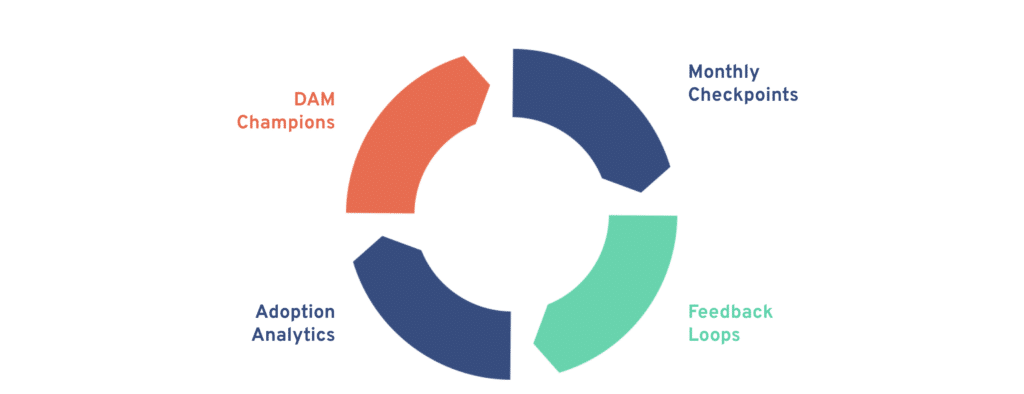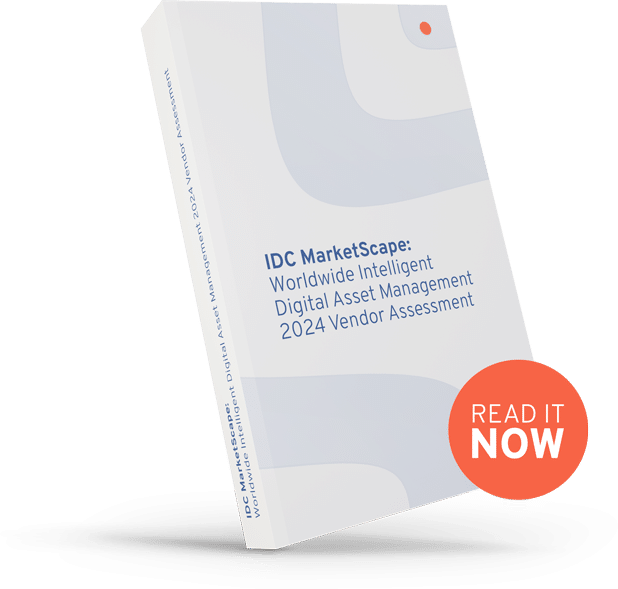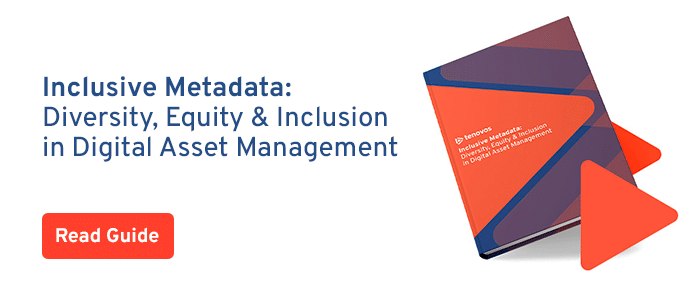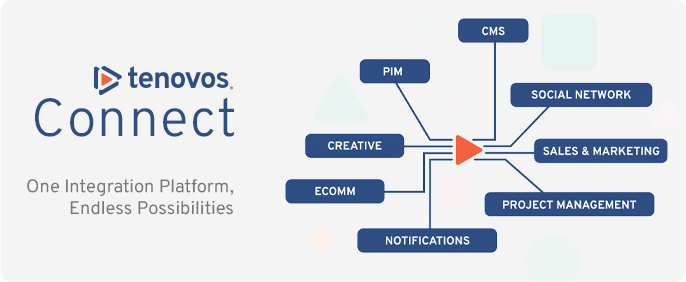
Implementing a new digital asset management (DAM) platform is a daunting task.
These are complex systems that are used to managed thousands, sometimes millions, of digital assets, and have stakeholders from multiple teams within the organization. They must satisfy the needs of highly organized DAM managers, while simultaneously delivering a fantastic user experience for the company’s most creative minds.
Implementing a DAM, while exciting, is no small feat.
When tackling a big project, it’s always a good idea to start by learning from those who have done it before. Today, we’re going to learn from Vanessa Escobedo Barba, DAM Manager at Onnit.
Vanessa recently completed a successful implementation of a brand new DAM for her company, and she shared her thoughts and insights on successful DAM implementations in a webinar earlier this month.
Here are Vanessa’s top insights (but if you can spare the 45 minutes, it’s worth it to watch the entire webinar for even more great tips).
Engage With Users and Stakeholders Early in the Process
As mentioned already, there are a number of users, stakeholders and teams who will be in the DAM on a daily basis. It only makes sense to start by talking to them, early. Why?
The key to successfully implementing a DAM is understanding what the key requirements for the technology are going to be. Every organization will be different, which is why you need to start by talking to your stakeholders.
It’s also an important time to set proper expectations with those people. As you learn their requirements and use cases for the DAM, you may hear something that you know won’t be possible in the tool. Now is the time to set that expectation, while simultaneously starting to work on a solution.
This is going to build trust with your users and stakeholders that you understand them, which leads to stronger user adoption when the system goes live. And of course, it’s going to help ensure any DAM platform you purchase is going to satisfy the needs of your users.
Project Management Is Key
Some companies are going to have more resources than others. For those lucky enough to have them, it’s a good idea to leverage existing project management teams or resources to help keep your implementation on track.
Planning is essential to this entire process. From communication plans to training, testing, data and asset migration, and more, there are countless moving parts and ways for the timeline to get out of control. A project manager helps immensely to keep things running smoothly.
If you don’t have access to a project manager, then instead try to use some kind of project management tool to stay organized. The scope and scale of a DAM implementation necessitates some kind of digital tool to stay on top of everything. Post-its and paper notes just won’t cut it.
Communicate, and Communicate Some More
During a DAM implementation, there’s no such thing as over-communication. The best thing you can do is keep everyone in the loop on where things are at, any roadblocks or problems, and key milestones.
Sometimes we think of communication as simply emails being sent, but it really includes everything from training to executive presentations. Make sure you have a concrete communication plan that tracks all the different communications you want to send, where they’re going, and what’s in them. Stay on top of it to build trust between you and your stakeholders that everything is under control, and that they’ll be notified if or when something requires their attention.
Learn how Onnit successfully implemented their DAM, from executive buy-in and budget to go-live.
Keep It Simple
This is a tough one, specially if you’re moving from an outdated folder-based system like Google Drive to a modern DAM like Tenovos. How do you recreate those folders structures that are 10 layers deep?
The answer is, you don’t.
Modern DAMs are designed to optimize the user’s ability to find assets. The best thing you can do is keep your structures as simple as possible. Don’t try to recreate the old way of doing things, but simplify and optimize for the new tool.
It’s worth remembering the DAM will evolve over time, and things will need to change. So, for the purpose of a smooth implementation that delivers a functional user experience, don’t overthink it just yet.
Ongoing Maintenance Keeps the DAM Running Smoothly
A common mistake people make is thinking a DAM implementation is done the minute the system goes live. Sure, the system is up and running but there’s still a lot that needs to be done to keep it working well.
As part of your implementation, take time to build out a regular maintenance plan and processes to ensure things like asset and metadata audits and cleanups happen regularly, that user permissions are being checked on, and that automations or workflows are operating the way they were designed.
Being proactive with maintenance means fewer issues and complaints from users down the road, and it keeps them working in the tool rather than defaulting to old systems and processes. This is especially important in the early going of the DAM, where users are most likely to push back on the tool if they see problems that don’t get fixed fast.
Not Everything Will Go As Planned
Digital asset management implementations are big projects for big technologies. It’s inevitable that something is going to go wrong.
The sooner you accept that reality, the more prepared you’ll be to overcome it when it happens to you.
It’s impossible to think of every eventuality or requirement in the DAM. Maybe something doesn’t work the way it was intended, or a key requirement is somehow overlooked. These things happen to everyone. What’s important is that you don’t get overwhelmed, and look for creative or resourceful solutions to the problem.
Create a Hard Cut Off
Change is hard, and no one likes to do it. At Onnit, Vanessa’s team moved from a Google Drive to DAM. It was important for her to give users some time with both systems so they could feel comfortable, but also have a cut off date set in stone where access to G Drive would be terminated.
It needs to be a clear cut transition to using the new system full-time. Some people may find this a bit harsh, but it’s truly the only way to push people into the change they need to go through. Digital asset management platforms can be daunting for new users, but if you’ve done a good job at change management leading up to this point, you should have an excited group of people who, although nervous, are ready to take their first steps into the new system.
But just like you wouldn’t push a new swimmer into a pool without the lifeguard on duty, you shouldn’t force new users into a DAM without adequate support and training. Make sure your implementation plan includes time to build out support resources or processes, so that users have help when it’s time to move from old to new.
The Ongoing DAM Evolution
As mentioned above, the job of implementing a DAM doesn’t end when the system goes live. It’s a continuous cycle of change management, collecting feedback, optimizing the system, and measuring performance.
Follow these DAM implementation tips and you’ll be well on your way to launching a successful digital asset management platform of your own. And if you want more details on how Vanessa led Onnit’s implementation, from securing executive buy-in and budget to go-live, watch her webinar here.




